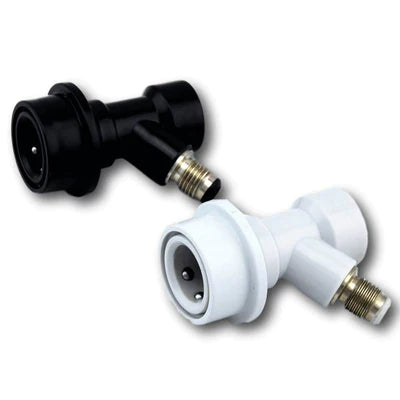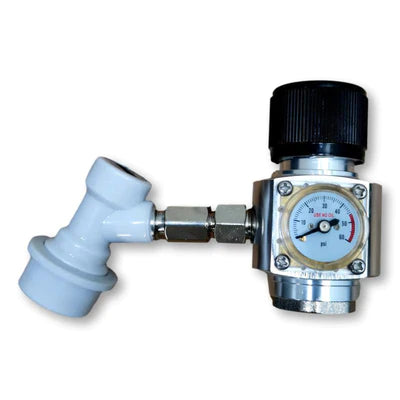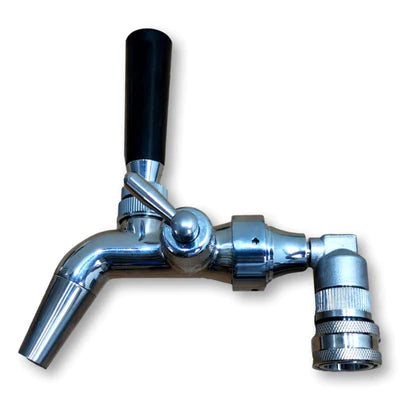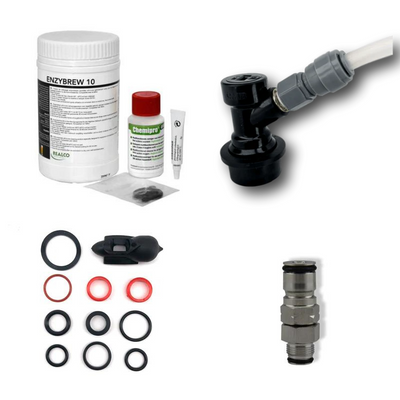How To Force Carbonate & Brew Under Pressure
What Is Force Carbonating?
- Force carbonating is adding carbonation to a liquid by pressurising the container it is in with CO2 for long enough that it absorbs into the liquid as bubbles.
- The colder the liquid, the higher the pressure and the more surface area is in contact between the liquid and the CO2 the faster the gas will absorb.
- The fastest way is to inject as much gas as possible into a vessel that is only half full of very cold liquid and shake it vigorously or inject the gas from the bottom of the liquid (like a sodastream machine). If you wanted to make sodawater quickly this is fine but beer, cider, kombucha etc need a little more finesse or you end up with an over carbonated foamy mess.
What Is The Most Reliable Way To Force Carbonate?
- Carbonation level is determined by what volume of CO2 is dissolved into the liquid.
- CO2 stops dissolving when equilibrium is reached ie no more can enter the liquid at the current pressure and temperature..
- Equilibrium point is determined by the pressure in the vessel and the temperature of the liquid.
- The colder the liquid, the more gas can dissolve into it.
- The higher the pressure the more gas is forced into the liquid.
- Once equilibrium is reached it doesn't matter how long the vessel is left, so long as the pressure and temperature remain the same the carbonation level will stay the same and no more gas will be used or absorbed.
- Using this information we can produce exactly the level of carbonation we want.
Carbonation Table - Temperature, Pressure and Beer Style
- To use the chart above you 1st choose the style of beer from the colours at the bottom. The most common styles (lager, ale amber) have around 2.5 volumes of CO2 dissolved in them to be perfectly carbonated and are the yellow band across the centre.
- After that choose the temperature your liquid is being stored at while carbonating. (example a fridge at 5 deg). Find this temperature on the left side and follow it across till you hit your beer style (in our case we would hit the yellow band in the 5 columns just to the left of centre).
- This tells us that we would need to set our CO2 pressure to 9-13 PSI to get the correct level of carbonation.
- How long it takes to reach the correct level depends on the volume of liquid you are trying to carbonate and the temperature. The warmer it is and the larger the volume of liquid the longer it will take to absorb the gas.
Brewing Under Pressure (Carbonate While Fermenting)
- You will notice that the temperature range in the table below go up far above fridge temperature. This is for when you are brewing beer in a pressure fermenter like the Fermzilla, Fermentasaurus or King Jr.
- A pressure fermenter can handle pressure building up inside it, which happens as CO2 is produced during fermentation.
- Say you are brewing ale at a room temperature of 24 degrees with a spunding valve attached (which is an adjustable pressure release valve, you set it at what you want the pressure of the vessel to be and it vents any gas pressure above that level),
- If you set the spunding valve it to vent anything above 29psi, when your beer finishes brewing it will have used the CO2 produced during brewing to carbonate it at the same time so it is ready to drink!
- You just need to chill the brew down and either attach a tap or transfer it to a keg for tapping.
- This saves you both time waiting for carbonation afterwards and money on gas as the CO2 from fermentation is used!
Transferring Under Pressure (From Fermenter to Keg or Keg to Keg)
- Sanitise and flush your keg with CO2 to remove any oxygen
- Pressurise your empty keg to the same as the source vessel (if you connect the two gas posts they will equalise)
- Set your spunding valve to the same pressure (connect it to a regulator and adjust)
- Connect the liquid posts together with 2 x liquid disconnects and some beer line.
- Attach the spunding valve to the gas post of the empty vessel.
- Attach your regulator to the gas post of the full vessel.
- Turn up the pressure on the regulator to slightly above the empty vessel pressure
- Wait till transfer is complete.
- Methods to measure when the keg is full
- Watch the condensation line on the outside of the empty keg rising.
- Have the empty keg on a zeroed set of scales and use 1L of liquid weighs 1kg
- Use one of our flow stoppers with the spunding valve. This automatically stops the filling once the keg is filled.







